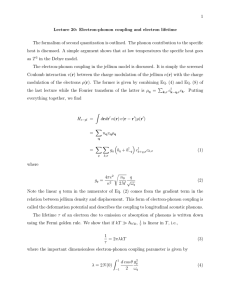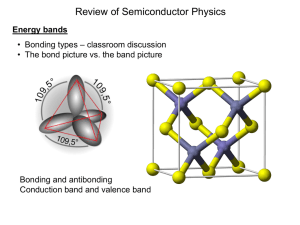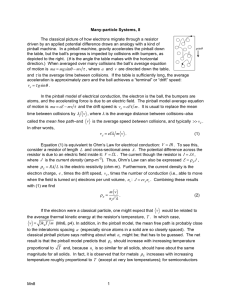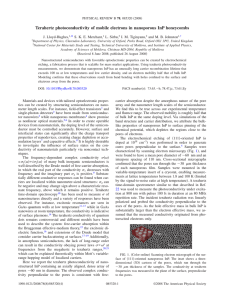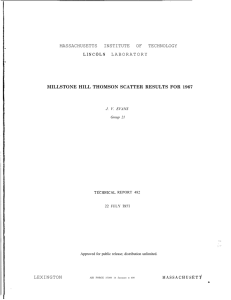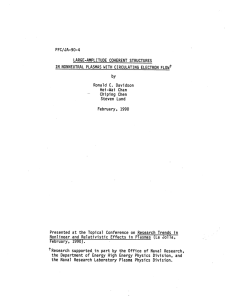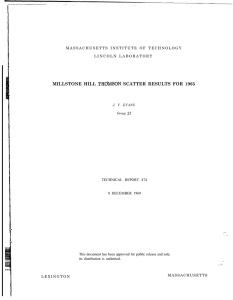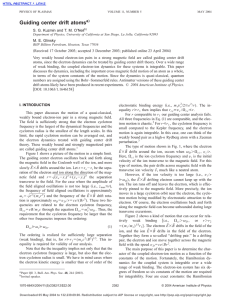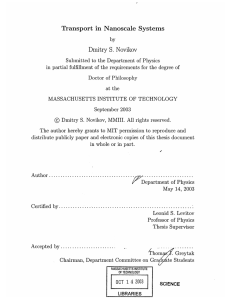PHZ7427: Spring 2014 MIDTERM: Solutions Wednesday, 03/12 Instructor: D. L. Maslov
advertisement
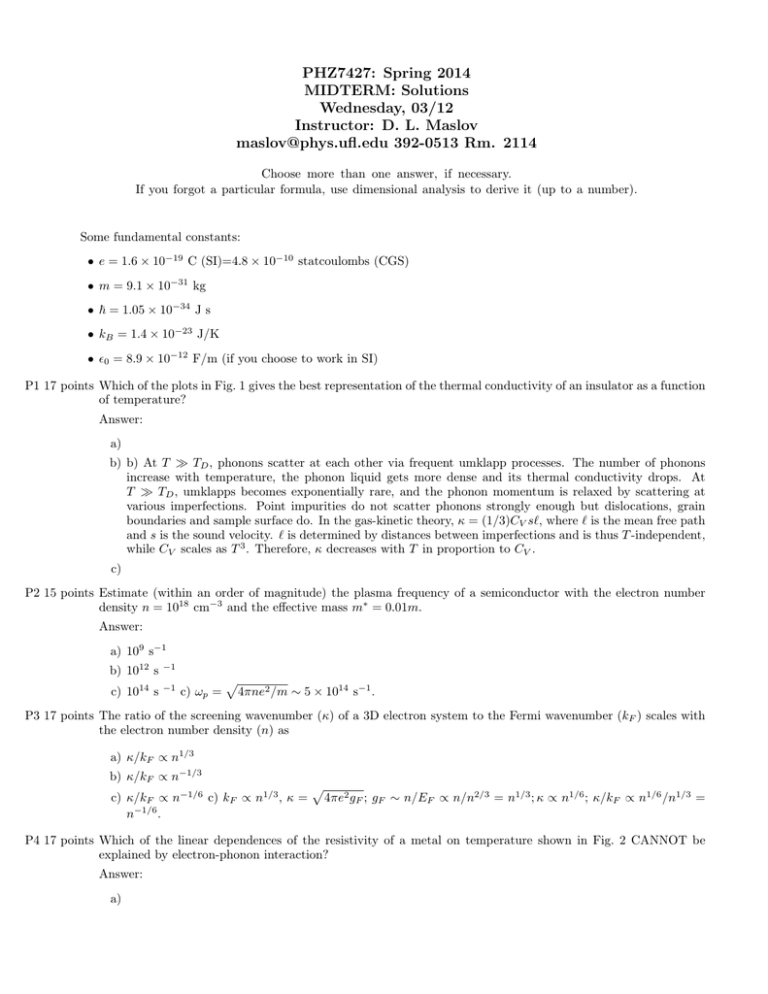
PHZ7427: Spring 2014 MIDTERM: Solutions Wednesday, 03/12 Instructor: D. L. Maslov maslov@phys.ufl.edu 392-0513 Rm. 2114 Choose more than one answer, if necessary. If you forgot a particular formula, use dimensional analysis to derive it (up to a number). Some fundamental constants: • e = 1.6 × 10−19 C (SI)=4.8 × 10−10 statcoulombs (CGS) • m = 9.1 × 10−31 kg • ~ = 1.05 × 10−34 J s • kB = 1.4 × 10−23 J/K • 0 = 8.9 × 10−12 F/m (if you choose to work in SI) P1 17 points Which of the plots in Fig. 1 gives the best representation of the thermal conductivity of an insulator as a function of temperature? Answer: a) b) b) At T TD , phonons scatter at each other via frequent umklapp processes. The number of phonons increase with temperature, the phonon liquid gets more dense and its thermal conductivity drops. At T TD , umklapps becomes exponentially rare, and the phonon momentum is relaxed by scattering at various imperfections. Point impurities do not scatter phonons strongly enough but dislocations, grain boundaries and sample surface do. In the gas-kinetic theory, κ = (1/3)CV s`, where ` is the mean free path and s is the sound velocity. ` is determined by distances between imperfections and is thus T -independent, while CV scales as T 3 . Therefore, κ decreases with T in proportion to CV . c) P2 15 points Estimate (within an order of magnitude) the plasma frequency of a semiconductor with the electron number density n = 1018 cm−3 and the effective mass m∗ = 0.01m. Answer: a) 109 s−1 b) 1012 s −1 c) 1014 s −1 c) ωp = p 4πne2 /m ∼ 5 × 1014 s−1 . P3 17 points The ratio of the screening wavenumber (κ) of a 3D electron system to the Fermi wavenumber (kF ) scales with the electron number density (n) as a) κ/kF ∝ n1/3 b) κ/kF ∝ n−1/3 c) κ/kF ∝ n−1/6 c) kF ∝ n1/3 , κ = n−1/6 . p 4πe2 gF ; gF ∼ n/EF ∝ n/n2/3 = n1/3 ; κ ∝ n1/6 ; κ/kF ∝ n1/6 /n1/3 = P4 17 points Which of the linear dependences of the resistivity of a metal on temperature shown in Fig. 2 CANNOT be explained by electron-phonon interaction? Answer: a) 2 κ a κ b T κ T c T FIG. 1: Problem 1. b) In a metal, the Bloch-Gruineisen temperature (the one that separates the T and T 5 scaling laws) coincides with the Debye temperature, which is on the order of few 100 K. Below 100 K, ρ should scale as T 5 . The linear temperature dependence observed in a normally high (metallic) carrier-density material is an indication of a non-Fermi-liquid behavior. c) P5 17 points Consider the same semiconductor as described in Problem 2. Which of the following is NOT true? a) Below 100 K, the specific heat of the electron subsystem scales linearly with temperature. b) Below 1 K, the electron part of the thermal conductivity scales as 1/T . c) Below 1 K, the resistivity scales as T 2 . c) In semiconductors, the Fermi surface occupies only a tiny fraction of the Brillouin zone, hence umklapp processes are forbidden. In the absence of umklapp processes, the electron-electron scattering rate, which does scale as T 2 , does not contribute to the resistivity. P6 17 points Consider an electron gas with the number density corresponding to the value of parameter rs = 0.1 (As a reminder, rs is defined as the ratio of the average inter-electron distance to the Bohr radius.) The Coulomb interaction among electrons a) increases the electron mass by about 10% compared to the free-electron value. b) decreases the electron mass by about 10% compared to the free-electron value. b) In the screened HartreeFock model, m∗ /m − 1 ∼ rs ln(1/rs ) (when the model is valid, i.e., for rs 1). For rs = 0.1, the formula indicates an about 10% decrease in m∗ . c) has no effect on the effective mass. 3 ρ a ρ 100 200 300 T (K ) b 1 2 3 T (K ) FIG. 2: Problem 4. ρ c 400 500 600 T (K )



